What Is A Ir Converted Camera
A few months ago I was asked well-nigh using an infrared filter with a photographic camera that has non had its built-in IR blocking hot mirror filter removed. The issue with using an unconverted camera is that because they are much more than sensitive to red light than infrared, you can end up with an image that is mostly red light with a scrap of infrared. Whereas with a converted camera you'd get an prototype that is mostly infrared with a bit of crimson.
This does depend on the strength and quality of the infrared filter you are using though. Some infrared filters let through more reddish light than others, and some only allow through infrared light.
I did previously wait into the apply of an unconverted camera for infrared photography here: Can the unconverted Fujifilm X-A1 exist used for infrared photography? But that wasn't a particularly good comparison.
And then I decided to try and do a better comparison, looking at how the choice of infrared filter affects the results with an unconverted camera, and how it compares to a converted camera. Doing the comparison has proved very catchy, and I've learnt several things along the way, but I feel I've at present got a reasonable comparison I tin show and discuss.
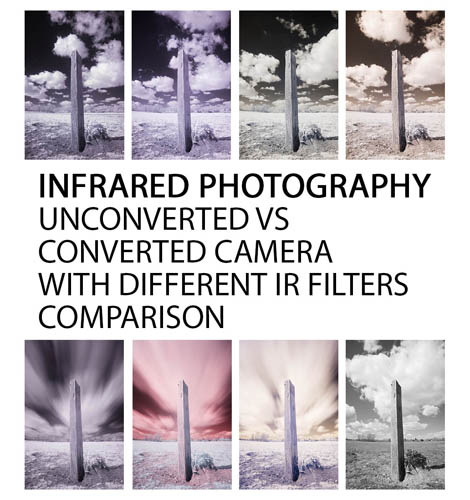
Colour comparison
Nosotros'll start off with a colour comparison. The superlative row of the epitome was taken with my full spectrum converted Fuji X-M1. The lesser row was taken with my unconverted Fuji X-A1. The Fuji X-A1 contains quite a strong IR blocking filter, similar in strength to the Catechism 5D mk 2.
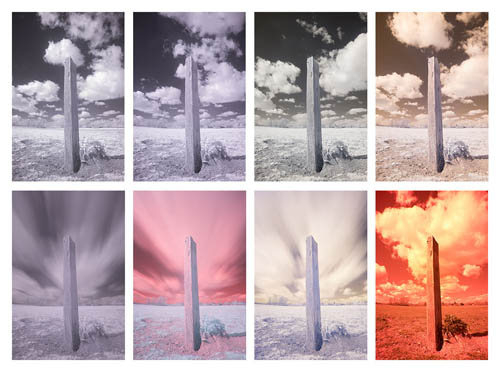
The starting time image on both rows was taken with a Lee #87 730nm polyester filter. The following iii images (on both rows) were taken with Zomei drinking glass filters rated at 850nm, 760nm, and 680nm respectively. The longer the wavelength, the more the filter should cut out visible light. So 730nm and to a higher place should laissez passer pure IR, while the 680nm filter should laissez passer some red light as well every bit infrared.
With regards to processing, all images have had their exposure adjusted and white remainder set on the grass. An adjustment brush to correct for the lens' IR hotspot was also used in the middle of each image.
The exposure times for the unconverted camera images had to be quite long. Because the infrared filter passes mainly infrared and blocks most visible light, but the camera's internal IR blocking filter only passes a very small amount of infrared light, very little low-cal gets through to the sensor. So a long exposure ( ~ 3 minutes ) is needed to get plenty light to form a reasonable exposure.
The about obvious difference betwixt the two sets of images is the ones taken with the unconverted camera (bottom row) are much more colourful, other than the start image. This tells us several things:
-
The Lee 730nm filter (first image) only lets through infrared light (no colour) and so that the images taken with both the unconverted and converted camera are roughly the same in terms of colour.
-
The Zomei 850nm and 760nm filters (images 2 and 3) are actually letting through quite a bit of coloured light, as can be seen on the unconverted photographic camera images (lesser row). This effect can't be seen on the converted photographic camera images (elevation row) because the converted camera is so much more sensitive to infrared light. In the time information technology takes the converted camera to collect enough light for an exposure it only receives a very minor amount of red low-cal, compared to a large amount of infrared lite.
The unconverted photographic camera has to use a long exposure considering most of the infrared light that passes through the IR filter is so blocked by the camera's internal IR blocking filter over the sensor. Because the exposure is then long, and the sensor is much more than sensitive to colour calorie-free than it is to infrared, this results in an paradigm where the colour light has a much stronger effect.
The Zomei 850nm and 760nm filters (at to the lowest degree certainly the 850nm filter) should not exist passing any colour lite at all. When I originally reviewed these filters (Zomei IR filters review & comparing), I just tested them with my converted photographic camera, and and so this deficiency was not obvious (or problematic).
-
The final epitome was taken with a 680nm filter, which lets through quite a flake of ruddy calorie-free. Y'all tin can see that the image taken with the unconverted camera is fabricated up about entirely from red light, with very picayune infrared. The infrared is blocked too strongly by the camera's internal IR blocking filter to give an infrared image.
Black & White comparing
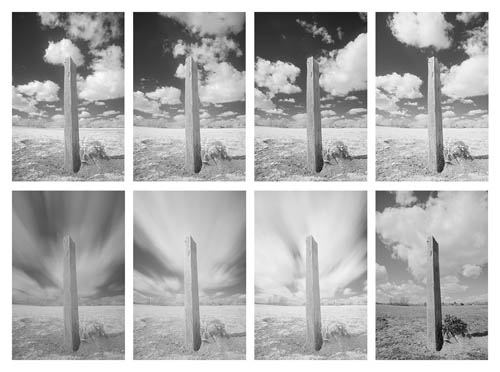
In black and white the main difference visible between the images is a lack of contrast in the unconverted camera images (bottom row). I am non sure what the cause of this is. I would gauge that a long exposure, plus the presence of the IR blocking filter, gives much more time for lite to bounciness around inside the camera and lens, and thus crusade a form of dissimilarity reducing veiling flare.
The other matter that is obvious is that the 680nm filter on the unconverted camera (final image, bottom row) is giving an image with very little IR. The grass is much darker and the sky much brighter than the corresponding image shot with the converted camera (top row).
Processed images
So far from this comparison we've seen that a 680nm infrared filter isn't suitable for utilize with an unconverted photographic camera, as yous get an image fabricated from red low-cal rather than infrared. But the other filters seem okay. We may go more colour than we wanted, or depression contrast, only we can easily fix that when processing the image. Here are the images processed to my tastes:
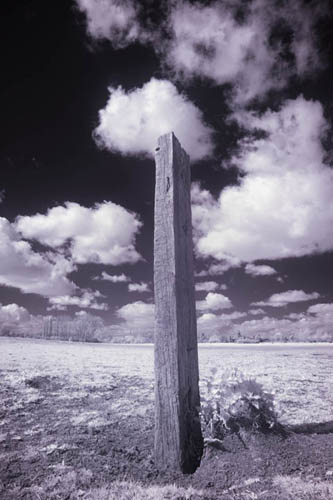
Converted photographic camera + Lee #87 730nm filter
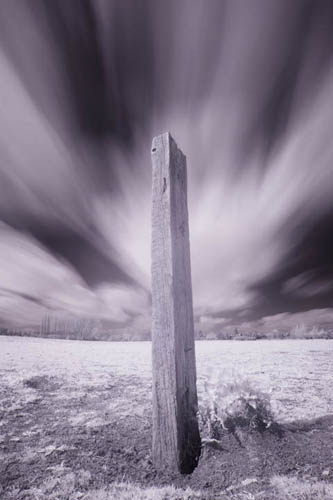
Unconverted photographic camera + Lee #87 730nm filter
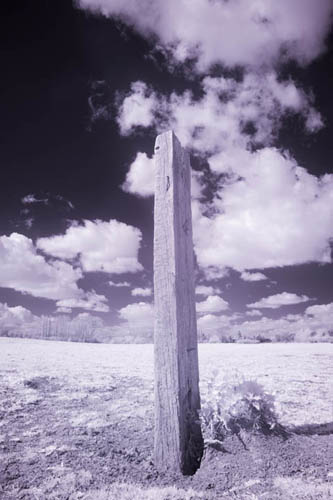
Converted camera + Zomei 850nm filter
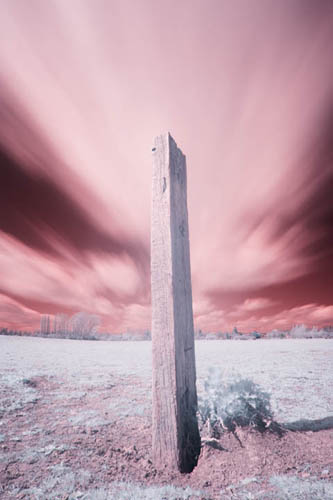
Unconverted camera + Zomei 850nm filter
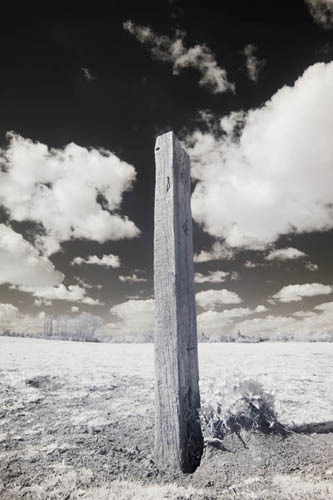
Converted camera + Zomei 760nm filter
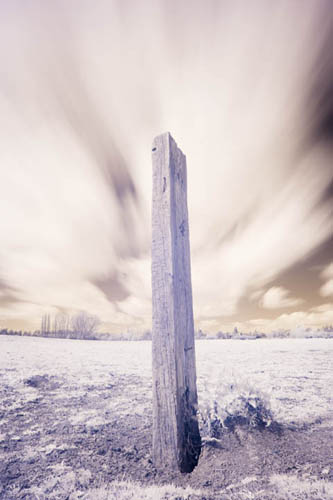
Unconverted camera + Zomei 760nm filter
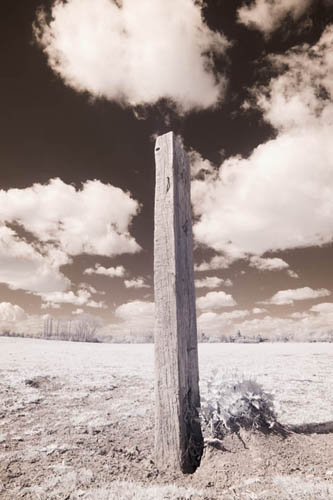
Converted camera + Zomei 680nm filter
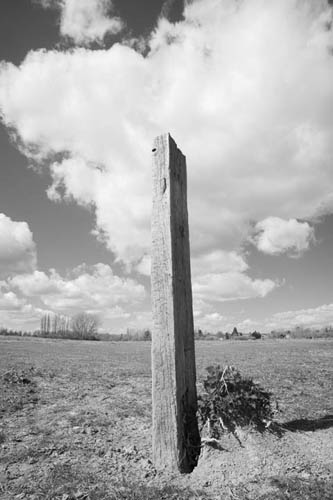
Unconverted camera + Zomei 680nm filter
Focus divergence between IR and Visible light
Now, those images above may look fine when displayed on the web. Just the images that combine larger amounts of coloured light with infrared lite (i.e. those taken on the unconverted camera with the Zomei 760nm and 850nm filters) have some significant issues at the edges when viewed close upward.
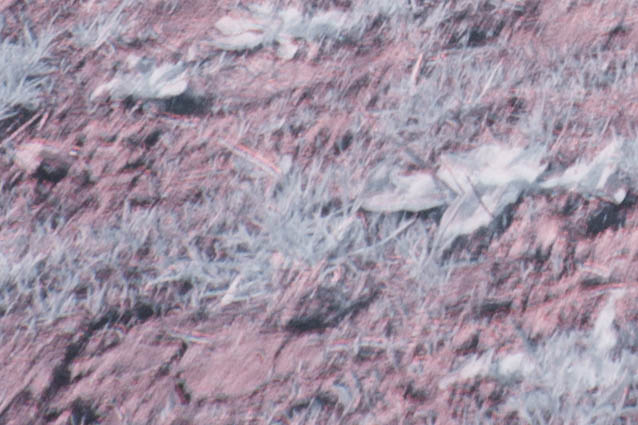
You can see in the ingather above, in that location is a kind of double epitome effect, with i kickoff slightly from the other. What is happening here is that the lens focuses visible light and infrared low-cal at ii different distances. So we terminate up with a visible light image focused at 1 distance, and an infrared image focused at a farther distance, with i overlaid on top of the other.
If we have a look at an paradigm shot with the converted photographic camera, we can see that because the vast majority of the image is made from infrared lite, the effect is non visible:
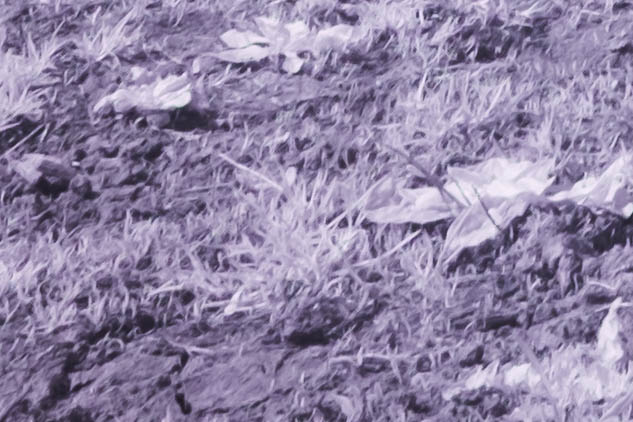
We can also use a amend filter on the unconverted camera, i that blocks all visible calorie-free (such as the Lee 730nm filter):
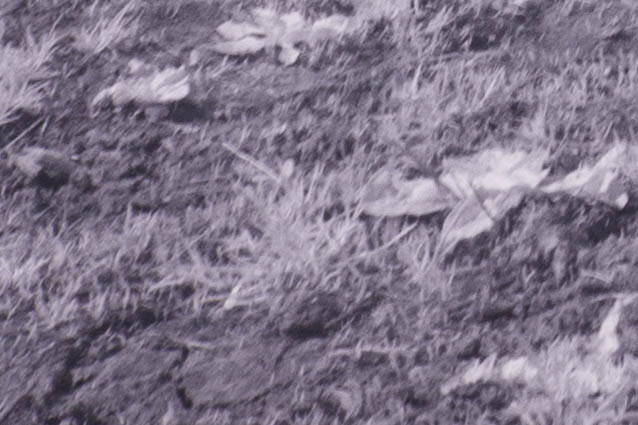
I must admit, this image is not as sharp as I would have thought. Although the image is quite a bit better than the combined IR + Visible light image given by the Zomei 850nm filter, it is still quite a bit worse than the converted camera image. The issue is not downwardly to the filter, you can meet a crop of the aforementioned filter on the converted camera is nice and sharp:
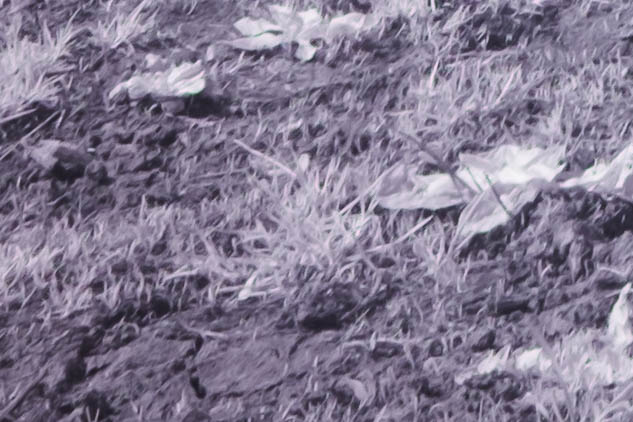
If anyone has any ideas why the 'pure IR' epitome would not be sharp on an unconverted photographic camera, I'd love to hear them.
It should also be noted that whether you'll encounter this effect and how bad it is depend on the lens yous're using. Using a different lens on the unconverted camera I get a much improve effect:
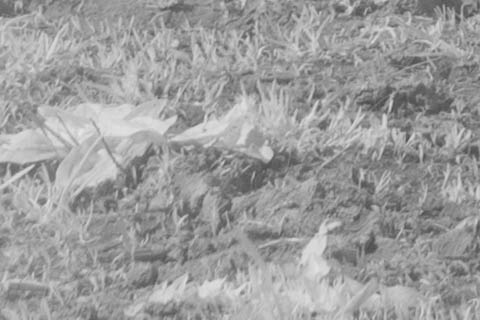
Unconverted camera + Zomei 760nm IR filter
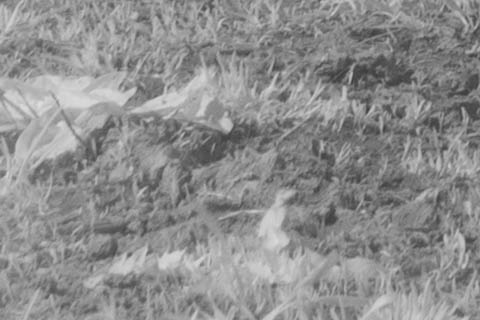
Unconverted camera + Lee 730nm IR filter
Unfortunately, while you can discover lists of lenses that are accounted to be suitable or unsuitable for infrared photography, these only tend to consider whether the lens has an IR hotspot or not. I take not seen any details posted almost the amount of focus shift in infrared that dissimilar lenses have.
Employ with adapted lenses
When I originally started trying to take some photos for this comparison, back a few months ago, I attempted to make the comparison between my unconverted Canon 5D mk II, unconverted Fuji X-A1, and converted Fuji X-M1. On my Canon camera I was using an Olympus 24mm lens, mounted via an OM to EF mount adapter. Even so, I was seeing some very foreign furnishings in my Canon images:
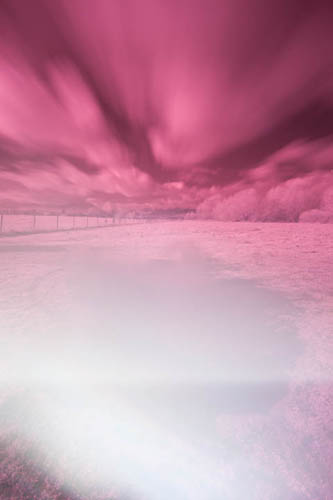
At first I thought this was flare from the puddle. Then later more testing I thought it might be a light leak from the viewfinder. Then after more testing I found the actual culprit - a light leak either between the adapter and lens or the adapter and the lens mountain.
Now, it'southward non like the lens or adapter were loose at all. And trying to put a piece of masking tape on the adapter made it too thick to fit. And so the tolerances must be very tight.
I managed to solve the issue by putting gaffer tape around the area where the lens mounts to the body, completely covering upward any chance for a gap that low-cal could leak through. Just this isn't a very practical solution since it means the lens is stuck to the camera trunk unless you remove the tape.
So, if you're using a lens with an adapter on your unconverted photographic camera, be aware that y'all may run into this issue when attempting infrared (or whatsoever kind of long exposure) photography.
Determination
With an unconverted camera that has a stiff IR blocking filter (most modern cameras), infrared photography is possible but fraught with difficulties. You will need to use a long exposure. Unless going for a pure IR image, you want a lens that displays no (or minimal) infrared focus shift. And if going for a pure IR image, you lot need to be sure that the infrared filter you're using is a skillful quality ane that actually does but laissez passer infrared calorie-free.
Source: https://www.davidkennardphotography.com/blog/1005-infrared-photography-unconverted-vs-converted-camera-with-different-ir-filters-comparison.xhtml
Posted by: murphyotibitepar.blogspot.com

0 Response to "What Is A Ir Converted Camera"
Post a Comment